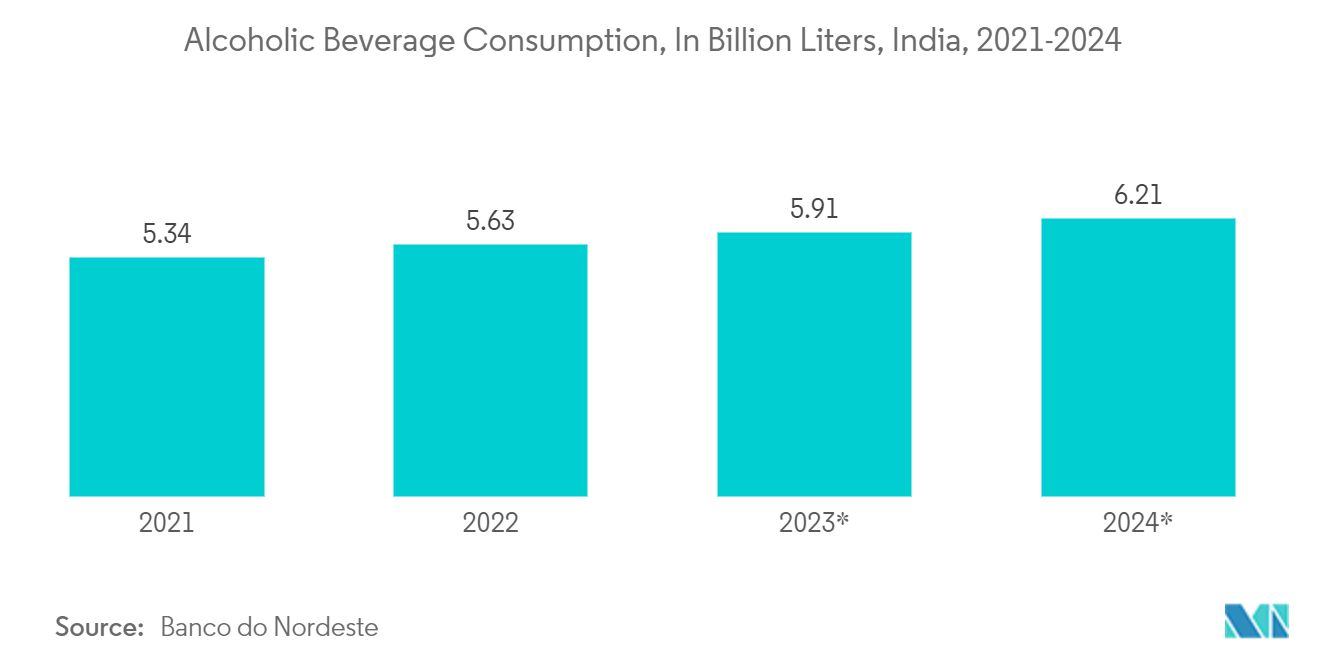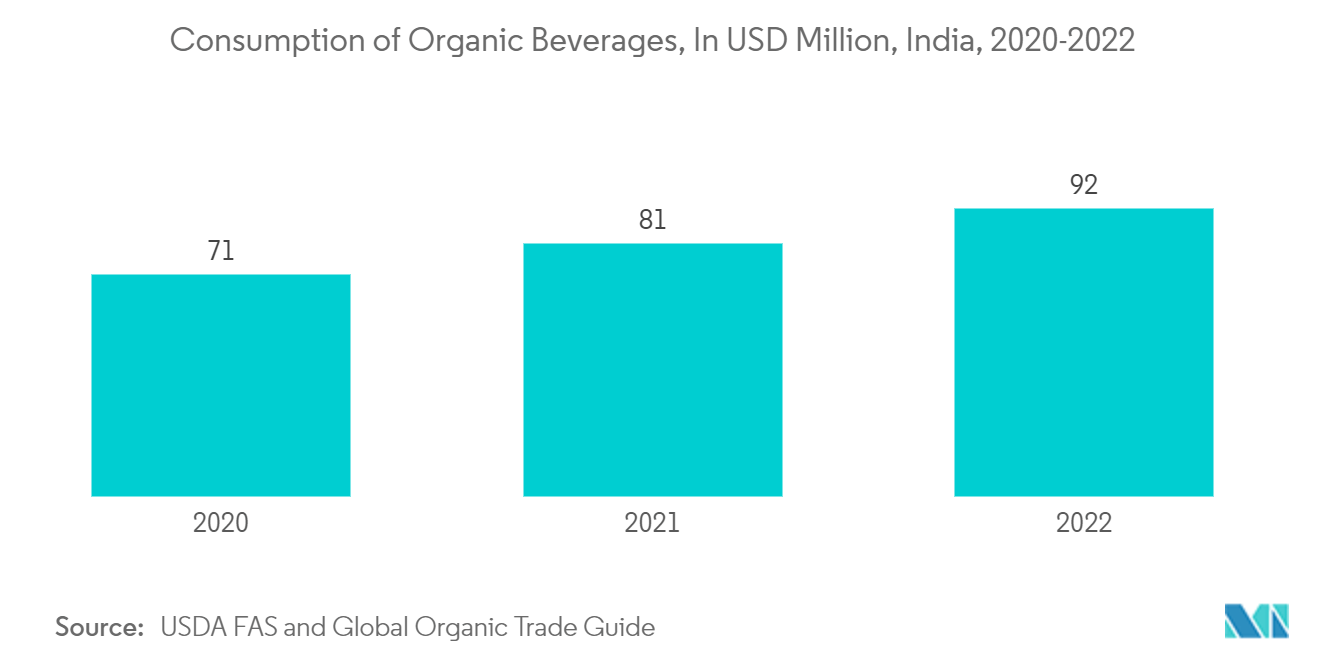Market Trends of India Container Glass Industry
Increased Liquor Consumption in India is Contributing Significantly to the Market
- Alcohol, such as wine and spirits, is usually stored in glass. The glass bottle is most favored in wine packaging, especially colored glass because wine should not be exposed to sunlight. If exposed to sunlight, the wine will get spoiled. The increasing consumption of wine is expected to spearhead the glass packaging demand during the forecast period.
- Alcohol consumption in India has doubled in the last 25 years. The focus would be more on the premium segment apart from increased penetration of the routine category to increase per capita consumption in India. Various vendors are also observing increasing demand from the wine and spirit industry. For instance, Piramal Glass, whose clients include Diageo, Bacardi, and Pernod Ricard, mentioned that it sees an increase in demand for short-run specialty bottles for spirits.
- India is one of the fastest-growing alcoholic beverage markets globally. Moreover, ICRIER (Indian Council for Research on International Economic Relations) said that over 70% of the growth in alcoholic beverage consumption in India in the next decade would be driven by the lower middle and upper middle-income groups, and there is a growing trend toward product premiumization.
- The sector is open to foreign investments, and many states offer subsidies for local manufacturing (for example, Maharashtra and Karnataka for wines). From the demand side, factors such as rapid urbanization, changing consumer preferences, and a sizeable and growing middle-class population with increased purchasing power have contributed to the growth in demand for alcoholic beverages.
- In addition, the government should focus on phased tariffs and other duties reductions, and Indian companies should be encouraged to export to improve the trade balance. Duty reduction for intermediate products can enhance value addition in India and boost domestic manufacturing potential. According to the Directorate General of Commercial Intelligence and Statistics, in the fiscal year 2022, the export value of alcoholic beverages from India amounted to USD 278 million, which is expected to grow in the coming years.
- According to Banco do Nordeste, the Brazilian regional development bank, it was predicted that India's alcohol consumption would increase to nearly 6.21 billion litres by 2024 from approximately 5.34 billion litres it was in 2021. An increasing urban population and higher levels of disposable money are just two of the reasons why there is a growth in the consumption of these drinks. Therefore this growing trend of alcohol consumption would positively push the demand for glass containers across the country in the forecast period.

Beverage Industry to Register Significant Growth
- Due to the plastic ban initiatives launched by the Indian Government, the usage of plastic beverage bottles has been restricted. This has led the beverage industry manufacturers to search for alternatives, and most of them have viewed Glass as an ideal replacement. The Indian soft drink market might continue its "robust growth trajectory" as the annual per-capita bottle consumption was expected to reach around 84 by 2021 and more in 2022, according to the report by PepsiCo India's bottling partner Varun Beverages Ltd (VBL).
- Moreover, Coca-Cola recently celebrated the 90th anniversary of the very first bottling of Coca-Cola's popular soft drink with a special edition 0.33-liter glass bottle in a distinctively vintage style. Furthermore, PepsiCo is looking to curb plastic packaging in its soft drinks. The company has set a target of reducing up to 67 billion plastic bottles by 2025. With its acquisition of the SodaStream business, it is expected to boost glass bottle packaging in its offerings.
- Additionally, according to Varun Beverage, the key franchisee of carbonated soft drinks and non-carbonated beverages under the trademark of PepsiCo, which has a significant impact on the Indian Beverage market, its net sales in India in 2022 were estimated to be over INR 106 billion (USD 1.28 billion) the company's net sales increased from roughly INR 40 billion (USD 0.48 billion) in the past year. With the robust growth in the company's net revenue, it can be anticipated that the beverage market across the country is witnessing significant growth.
- Moreover, many beverages are expected to use glass bottles, especially the drinks of some large manufacturers, which have been decorated with glass bottles. The main factor for the user will be that when glass bottles are used as packaging containers for juice or other drinks, there is almost no dissolution from container materials. Compared with other containers, glass bottles have good chemical stability and durability. All these factors will support growth for the market in the forecast timeframe.
- Indians are becoming more health conscious and demanding wholesome and nutritious foods. A sizeable portion of the urban population is now considering organic beverage options due to their increasingly stressed lives and busy schedules, processed and fast-food consumption, rising risk of lifestyle diseases, and rising disposable money. As per the USDA Foreign Agricultural Service and Global Organic Trade Guide, the consumption value of organic beverages in India reached USD 92 million in 2022. This significantly increased from the past years' consumption of USD 81 million.

